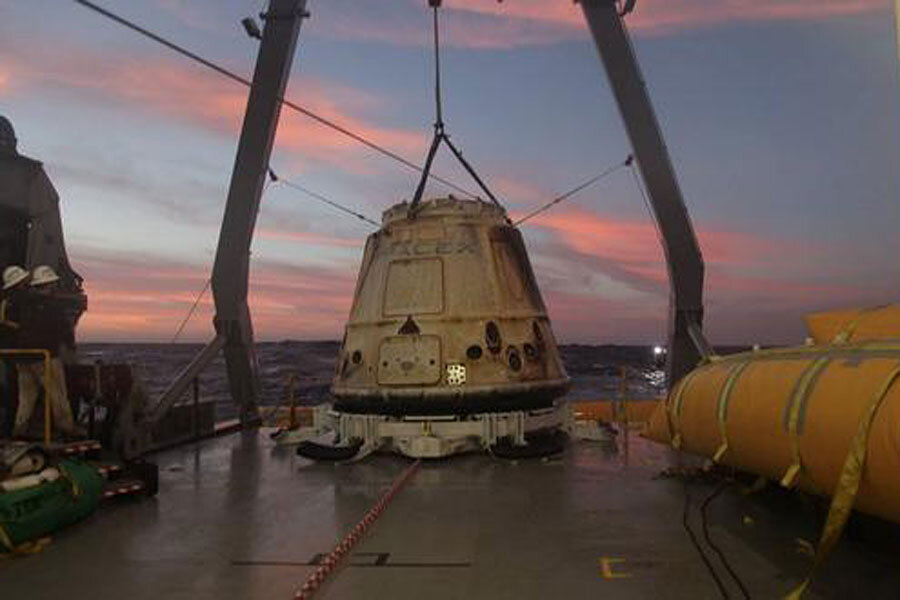SpaceX Dragon returns home
Loading...
Sen—A SpaceX Dragon cargo ship returned from a month-long stay at the International Space Station Tuesday, splashing down off the coast of California to complete the company’s fifth mission to the orbital outpost for NASA.
Dragon’s 4:44 p.m. PST/0044 GMT parachute landing came less than two hours after the company canceled plans for a Falcon 9 rocket launch from Florida to put the U.S. government’s Deep Space Climate Observatory (DSCOVR) into orbit.
Winds over the Cape Canaveral Air Force Station launch site were too high for the rocket to safely navigate through the upper atmosphere.
“Extreme wind shear over Cape Canaveral. Feels like a sledgehammer when supersonic in the vertical. Hoping it changes,” Elon Musk, SpaceX founder and chief executive Elon Musk posted on Twitter as the launch countdown proceeded.
But it was not to be. Launch of the company’s 15th Falcon rocket was retargeted for 6:03 p.m. EST/2303 GMT on Wednesday. If weather or technical problems delay launch on Wednesday, the next attempt will not come until Feb. 20 so the satellite can avoid flying too close to the gravitational field of the Moon.
DSCOVR eventually will end up in an orbit about 930,000 miles (1.5 million km) from Earth – nearly four times farther than the Moon.
SpaceX had hoped to launch DSCOVR on Sunday, but an Air Force radar system needed to track the rocket during flight failed minutes before the planned liftoff. The company passed on a launch attempt Monday due to expected bad weather.
Once DSCOVR is off the launch pad, SpaceX plans to attempt to land the Falcon's first stage on a platform floating in the Atlantic Ocean northeast of the launch site, part of a series of tests to develop the technologies to reuse its rockets.
Tuesday’s delay left SpaceX with one ocean recovery to manage instead of two, though the company said it was prepared for simultaneous operations.
Dragon returned with almost 4,000 pounds (1,814 kg) of experiment results and equipment, including two fan pump separators for U.S. spacesuits.
NASA wants to analyze the devices before clearing station astronauts Barry Wilmore and Terry Virts for a trio of spacewalks to begin re-configuring the station for planned commercial space taxis. The first outing is targeted for Feb. 20.
Related Links:
SpaceX signs deal for landing pad in Florida
Original story from Sen. © 2015 Sen TV Limited. All rights reserved. This material may not be published, broadcast, rewritten or redistributed. For more space news visit Sen.com and follow @sen on Twitter.







